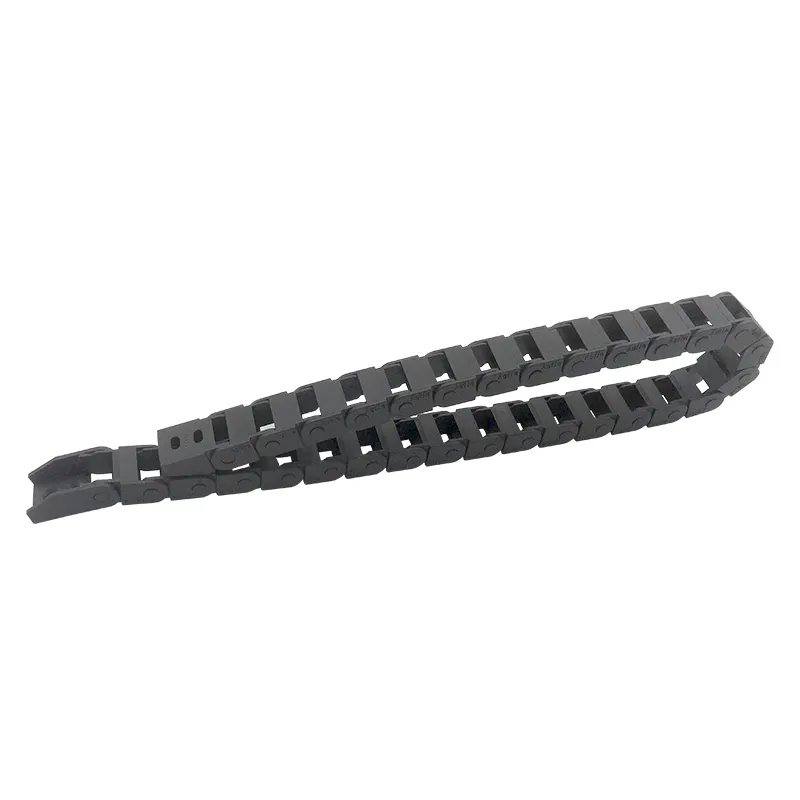cable track chain
Understanding Cable Track Chains A Comprehensive Overview
In the modern industrial landscape, efficiency and organization are paramount. One of the unsung heroes that contribute significantly to streamlined operations in machinery and equipment is the cable track chain. Often referred to as cable carriers or drag chains, these components aid in managing and organizing power and control cables in various applications, from manufacturing to robotics. This article delves into the intricacies of cable track chains, their types, applications, and advantages.
What is a Cable Track Chain?
A cable track chain is a mechanical system designed to hold and protect cables and hoses while allowing them to move freely with robotic arms, machinery, or other mobile structures. By enclosing these cables in a protective chain, manufacturers can prevent wear, tear, and tangling of wires, enabling smoother operation and prolonging the life of both the cables and equipment.
How Cable Track Chains Work
Cable track chains consist of interlinked segments that form a flexible yet sturdy system. They are installed in a way that allows them to extend and retract as needed when the associated machinery moves. The interior of these chains is often fitted with dividers to further organize the cables, ensuring that different types of cables or hoses do not interfere with each other during movement.
The design of cable track chains varies significantly based on the application. For instance, some chains are made from lightweight materials for use in aerial applications, while others are designed for heavy-duty environments, incorporating robust materials like stainless steel or reinforced polymers.
Types of Cable Track Chains
1. Open Cable Track Chains These feature an open design that allows easy access to the cables for maintenance or replacement. They are ideal for situations where frequent adjustments are necessary.
2. Closed Cable Track Chains These provide a fully enclosed protective pathway, which is particularly beneficial in aggressive environments where dust, dirt, or debris could damage the cables.
3. Heavy-Duty Cable Track Chains Engineered for extreme conditions, these chains are constructed from robust materials and are often used in industrial machinery, construction equipment, and automation systems.
4. Lightweight and Flexible Cable Track Chains Often made from plastic or aluminum, these are used in applications where weight is a consideration, such as aerospace or lightweight robotic applications.
5. Specialized Chains Some manufacturers provide custom solutions tailored to specific machinery or operational needs, enhancing functionality and efficiency.
Applications of Cable Track Chains
cable track chain

Cable track chains find applications across a wide range of industries. Key areas include
- Manufacturing They are extensively used in automated production lines for managing power cables and air hoses of robotic arms and conveyor belts. - Robotics In robotic applications, these chains help ensure that power and control cables remain untangled and free from strain as robots move in various directions.
- Construction Used in cranes and large machinery, cable track chains protect cables in environments where durability is critical
.- Aerospace Lightweight cable track chains facilitate the movement of essential cables in aircraft systems while keeping weight to a minimum.
- Marine and Automotive These sectors use specialized cable track chains to manage wiring in complex electronic systems and control mechanisms.
Advantages of Cable Track Chains
Using cable track chains offers several benefits, including
1. Protection They shield cables from abrasion, wear, and environmental hazards, extending their operational life. 2. Organization Maintaining a neat and organized setup reduces the risk of cable damage and makes maintenance easier.
3. Efficient Movement Designed for dynamic applications, cable track chains facilitate smooth movements without entanglements, contributing to overall operational efficiency.
4. Flexibility With various designs available, cable track chains can be tailored to fit unique applications, enhancing functionality.
5. Cost-Effectiveness By reducing cable wear and the risk of operational downtime, they save businesses money in the long run.
Conclusion
As industries continue to evolve towards automation and efficiency, cable track chains will play an increasingly vital role. Their ability to manage and protect cables while enabling smooth movement makes them indispensable in many applications. Understanding their types, functions, and advantages helps businesses to choose the right solutions tailored to their specific operational needs, ultimately enhancing productivity and performance in a competitive marketplace.








